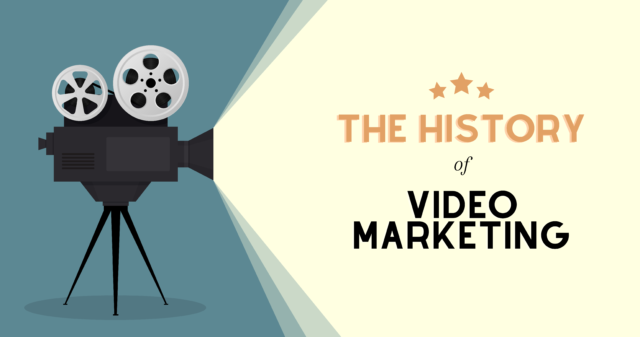The History of Video Marketing
We all know video is popular, we see it painted across our screens daily – on TVs, computers, smartphones, even digital billboards. And the statistics show us why. Video content drives conversions and engagement, and 85% of consumers say that it helps them connect with brands better. As a marketing tool, video allows us to pack a ton of information and personality into digestible bites. So, where did it all begin?
The History
- In 1941, the first television commercial aired – and the 10-second spot only cost $9 to place
- The 1950s-60s were dubbed the “Golden Age of TV Advertising”
- In the ‘80s, we saw Superbowl ads rise in popularity, giving us famous spots like Apple’s 60-second ‘1984’ Macintosh piece
- Entering the digital era, 1994 brought us online advertising – we saw DART, Flash, HTML5, and finally Google take a stab at working out the kinks over the years
- In 2005, YouTube launched and hit 100 million views per day by July of the following year
- The first smartphones brought video into the palm of our hands in 2007
- And finally, from 2013 on we have seen video content boom in the age of social media – from Vine to Tiktok, Instagram Reels and Facebook Watch
The Power of Video
Consumers are increasingly visual, and marketers are fighting for their attention. It’s estimated that the average human attention span has dropped to just 8 seconds. But video can help combat that. Research shows that viewers retain about 95% of messaging from video compared to only 10% when reading text. Plus, users will spend up to 88% more time on websites with video content.
If you’re considering integrating more video into your marketing mix but don’t know where to start, consider the different types of content and which fit your business and goals best:
Informative content like explainers, interviews with experts, product reviews and demos receive the best engagement.
Personality videos like behind-the-scenes looks, company culture videos or employee portraits help your consumers get to know you in a way that doesn’t feel like a sales pitch.
Live videos allow you to interact with viewers in the moment, answer their questions, and engage in a conversation. Plus, going live can maintain your audience’s attention up to three times longer than pre-recorded content.
Web series, mini-documentaries, and short films require more production, but the end product can be a compelling, organic form storytelling that leaves your viewers feeling inspired.
Traditional commercials and digital ads still have their place – they can be placed virtually anywhere, including streaming services, websites, and on social media.
Video content can be integrated across channels to exponentially improve engagement and other performance metrics versus static images and text. For example, adding an in-depth product explainer to your e-commerce site helps buyers make more confident purchasing decisions. Consider working with influencers who are willing to share an honest review of your offerings that encourages brand trust and generates new awareness – you can also re-share these to your own feeds to diversify the social media mix. Place videos ads where your customers are already spending time, including streaming services from Netflix and Hulu to Youtube and Twitch. When creating digital campaigns, use Google’s intuitive targeting tools to place video advertisements on websites that match your audience’s interests. As technology evolves, marketers have new and exciting opportunities to experiment with audience interaction, like augmented and virtual reality. When it comes to video marketing, get creative! The possibilities are endless and the results are well worth the effort.
Want to learn how you can harness the power of video for your marketing mix? Watch a recording of our recent webinar on the topic here.

